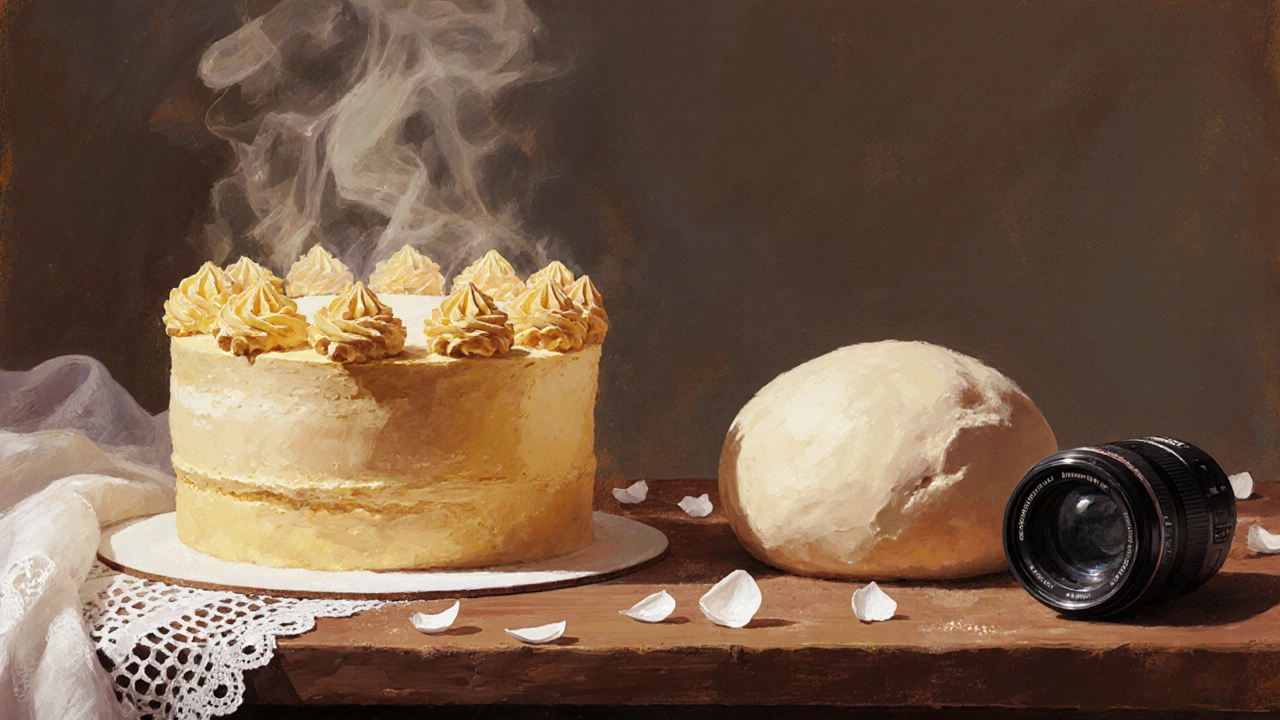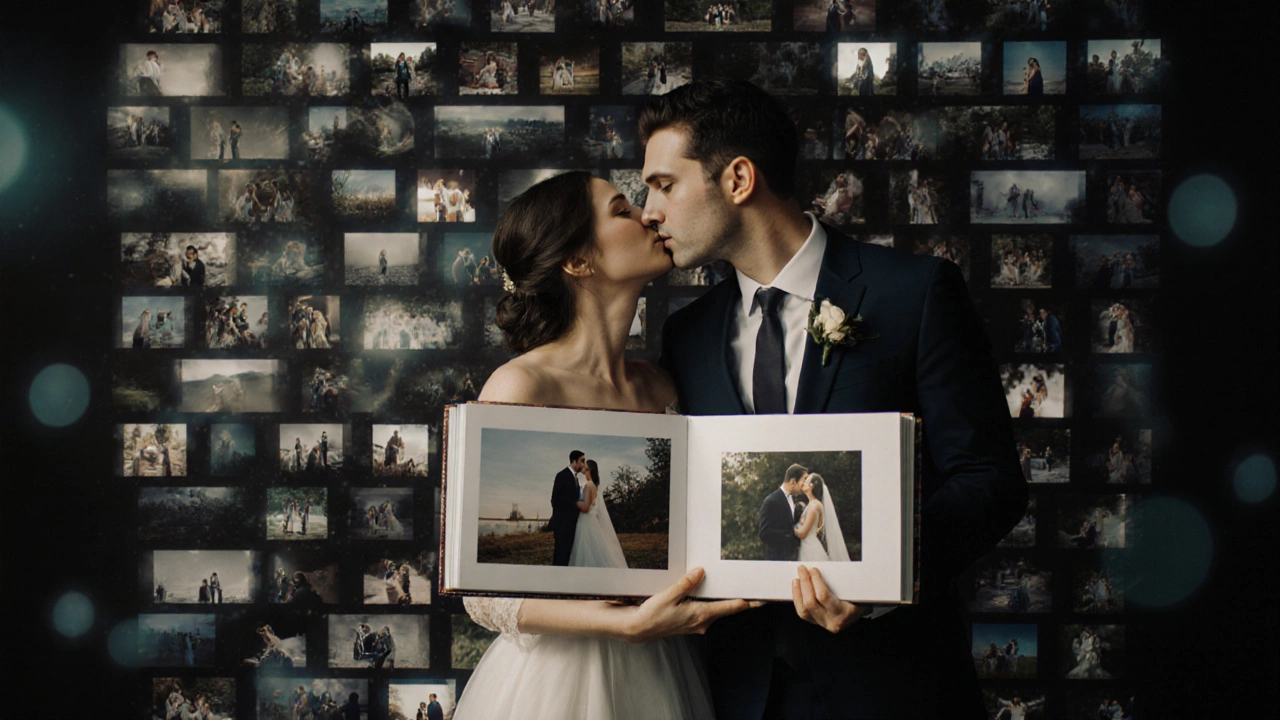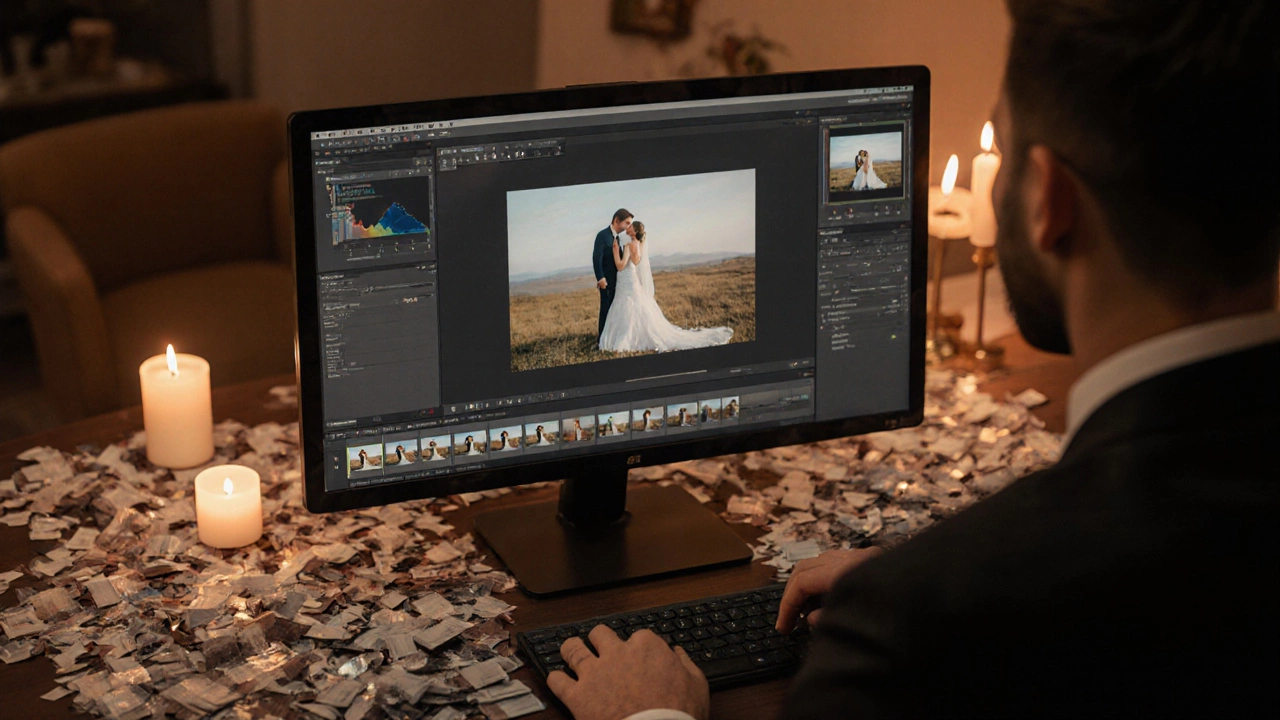Raw vs. Edited Wedding Photo Comparison Tool
Wedding photographers don't give raw files because raw files are just the starting point—not the final product. See the dramatic difference between raw files and the professional edited images you'll actually receive.
Why This Matters
Raw files look flat and unprocessed—they're like the raw dough. The edited version is the finished cake.
Professional editing transforms your wedding day into beautiful, emotional images that tell your story.
What Editors Do
- Enhance colors to make your dress pop
- Adjust lighting for beautiful skin tones
- Remove distractions like wires or trash cans
- Correct white balance for authentic candlelight
- Fine-tune exposure to capture emotional moments
Did you know? A wedding photographer might capture 3,000-6,000 raw images but only deliver 500-800 polished, edited photos that tell your story.
Professional Editing Is Art
It takes a skilled editor hours to perfect 100 images. That's why raw files are not included in standard packages—because they're not the final product you're paying for.
Ever asked your wedding photographer for the raw files-and got a polite but firm no? You’re not alone. Many couples expect to walk away with every single photo taken on their big day, including the unedited, unprocessed raw files. But most professional wedding photographers don’t hand them over. And it’s not because they’re being difficult. It’s because raw files aren’t the final product-they’re the starting point.
What Are Raw Files, Anyway?
Raw files are digital negatives. They’re the unprocessed data captured directly by your camera’s sensor. Unlike JPEGs, which are compressed and have color, contrast, and exposure baked in, raw files look flat, dull, and sometimes even weird. They need editing to become the vibrant, emotional images you see in albums and on your wall.
Think of it like this: a raw file is the raw dough. The final photo is the baked cake-golden, sweet, shaped just right. You wouldn’t hand someone a lump of raw dough and say, "Here’s your birthday cake," would you? That’s what giving out raw files feels like to a professional photographer.
Why Professionals Don’t Give Raw Files
There are three big reasons: quality control, artistic integrity, and business practice.
First, raw files are messy. A wedding might generate 3,000 to 6,000 raw files. Only 500 to 800 make the final cut. The rest? Blurry shots, awkward expressions, out-of-focus moments, duplicate frames. Giving clients all of them is like handing them a 3,000-photo mess and saying, "Figure it out." That’s not service-it’s abandonment.
Second, editing is part of the art. Wedding photographers don’t just point and shoot. They spend hours adjusting white balance to match candlelight, pulling detail out of shadowed faces, smoothing skin just enough to look natural, and enhancing colors so the dress pops without looking fake. That’s their skill. That’s their value. Raw files strip away that craftsmanship.
Third, it’s a business standard. Most photographers include editing in their package price. Giving away raw files would mean clients could edit the photos themselves-or hire someone else to do it-and then share them online without credit. That undermines the photographer’s brand and control over how their work is presented.
What Clients Actually Get Instead
You’re not being left out. Most wedding photographers deliver a curated gallery of 500 to 800 high-resolution, fully edited JPEGs or TIFFs. These are print-ready, social-media-ready, and designed to tell the story of your day beautifully. They’re the final version-the cake, not the dough.
Some photographers also include:
- A custom online gallery with download access
- A printed wedding album with professionally designed layouts
- Print releases so you can order prints from any lab
That’s the real value. You get the polished, emotional, timeless images without the hassle of sorting through hundreds of unusable shots.

What Happens If You Ask for Raw Files?
Some photographers will give you raw files-but usually for an extra fee. Why? Because it takes more time and responsibility. You’re asking them to hand over the raw material of their work, which means:
- They may need to provide a full folder structure with metadata
- They might have to sign a license agreement
- They’ll likely charge $300 to $800 extra, depending on the number of files
And even then, most photographers will still deliver the edited versions first. Raw files are an add-on, not the default.
Why Editing Matters More Than You Think
Wedding lighting is unpredictable. Indoors, it’s dim and yellow. Outdoors, it’s harsh and white. A raw file from a dark church ceremony might look like a blurry gray blob. But with editing, the photographer can recover details in your dress, your partner’s face, the candle glow on the altar.
Editing isn’t just about brightness. It’s about emotion. A skilled editor will enhance the warmth of a first kiss, the tear in your mom’s eye, the laughter during the toast. They’ll make sure your skin tone looks natural under different lights. They’ll remove distractions-a stray wire, a trash can in the background, a blinking guest.
Without editing, you’d miss half the magic.
What About DIY Editing?
Some couples think, "I’ll just edit them myself with Lightroom." But editing wedding photos isn’t like tweaking a vacation snap. It’s time-consuming. It requires understanding color theory, skin retouching, exposure blending, and consistency across hundreds of images.
Most clients who try to edit raw wedding files end up frustrated. They over-process. They make skin look plastic. They mismatch colors. They spend 40 hours trying to fix what the photographer did in 10.
And then they realize: they paid for a professional, not a hobbyist.

Is It Ever Okay to Ask for Raw Files?
Yes-if you’re clear about why you want them.
For example:
- You’re a photographer yourself and want to study lighting techniques
- You plan to hire a different editor for a specific creative style
- You want to archive the original files for future generations
If that’s your reason, talk to your photographer upfront. Some will accommodate. Others won’t. But if you’re asking because you think raw files = more photos, you’re misunderstanding the value you’re paying for.
What to Look for in a Photographer
When hiring a wedding photographer, don’t just look at their portfolio. Ask:
- How many images will I receive?
- Are they fully edited?
- Do you include a print release?
- Do you offer albums or digital galleries?
- Do you provide raw files? If so, under what conditions?
A good photographer will explain their process clearly. They won’t hide behind jargon. They’ll show you examples of before-and-after edits so you understand the difference.
Final Thought: You’re Paying for Storytelling, Not Storage
Wedding photography isn’t about capturing every pixel. It’s about capturing the feeling. The way your partner looks at you when they think no one’s watching. The way the sun hits the lace on your dress as you walk down the aisle. The quiet laugh between you and your best friend during the reception.
Those moments aren’t in the raw files. They’re in the edited images-the ones carefully chosen, color-corrected, and composed to last a lifetime.
So when your photographer says no to raw files, they’re not saying no to you. They’re saying yes to quality. Yes to art. Yes to preserving your day the way it was meant to be remembered.
Why don’t wedding photographers give raw files like other photographers do?
Wedding photographers treat their work as a finished art piece, not a raw data dump. Unlike event or portrait photographers who might deliver raw files for quick turnaround, wedding photography involves hours of editing to ensure emotional impact, consistency, and quality. Raw files are unprocessed and require expert handling-most clients aren’t equipped to edit them properly, so photographers deliver only the final, polished images as part of their service.
Can I get raw files if I pay extra?
Yes, some photographers offer raw files as an add-on for an additional fee, typically between $300 and $800. This often includes a license agreement and sometimes requires you to sign a waiver acknowledging you’re responsible for editing them. But even then, most will still deliver the edited gallery first. Raw files are not standard-they’re a premium option.
Are raw files higher quality than edited photos?
Raw files contain more data, yes-but that doesn’t mean they’re "higher quality." Quality is about how well the image communicates emotion and tells the story. A raw file has more detail, but it’s flat, dull, and often unusable without editing. The final edited photo is what makes the moment look real, warm, and beautiful. That’s the quality you’re paying for.
What if I want to edit the photos myself?
You can edit the final edited JPEGs you receive, but editing raw files requires advanced software like Lightroom or Capture One and a lot of time. Most couples who try end up frustrated. Editing 700+ wedding photos properly takes 30-60 hours. That’s why professionals do it-they’re trained to do it fast, consistently, and beautifully. If you want to edit yourself, ask for raw files upfront and be ready for the workload.
Do all wedding photographers refuse to give raw files?
No, not all. But the vast majority do, especially in countries like New Zealand, the U.S., Canada, and the UK, where professional standards are well-established. A few newer or budget photographers might include raw files to attract clients, but they’re the exception. The industry norm is to deliver edited images only, because that’s what clients actually want and need.

